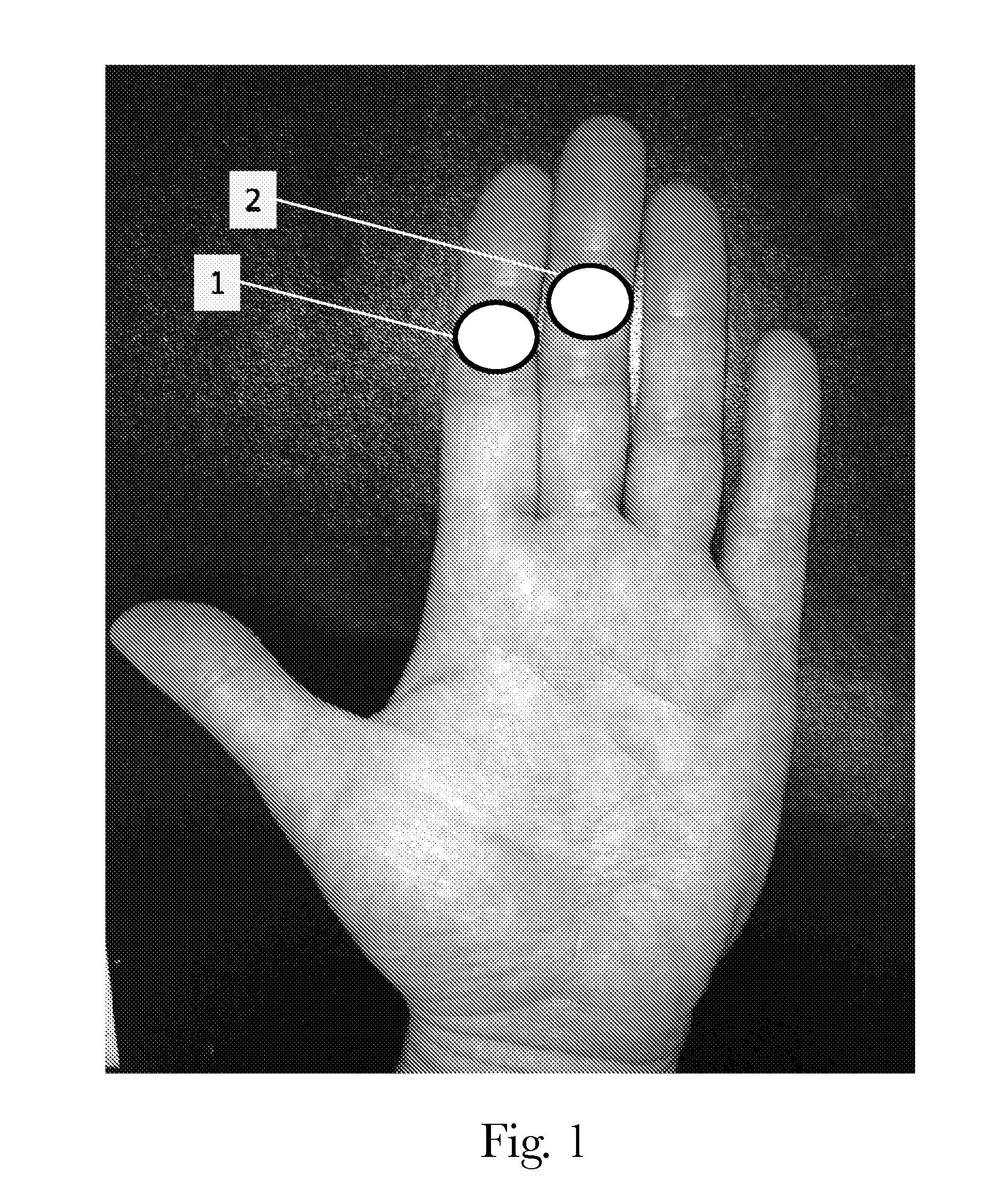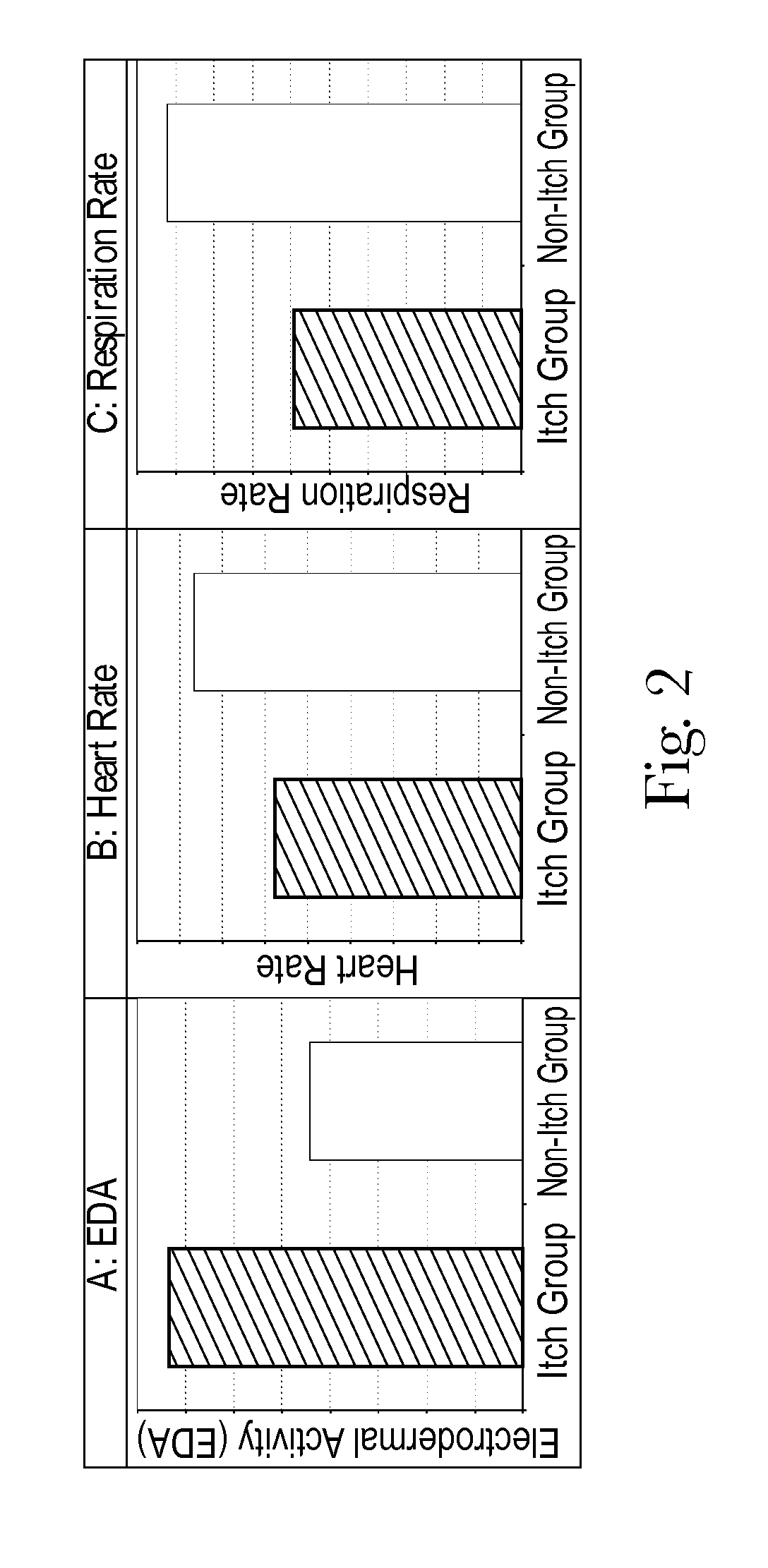Objective non-invasive method for quantifying degree of itch using psychophysiological measures
a non-invasive, objective technology, applied in the field of objective non-invasive methods for quantifying the degree of itch using psychophysiological measures, can solve the problems of large negative influence on sufferer quality of life and high variable data
- Summary
- Abstract
- Description
- Claims
- Application Information
AI Technical Summary
Benefits of technology
Problems solved by technology
Method used
Image
Examples
examples
[0045]The following are non-limiting examples.
example one
Evaluation of Itchy and Non-Itchy Subjects
[0046]A total of 18 subjects with self-reported itchy scalp and 17 subjects without itchy scalp participate in the study. Upon viewing an itch stimulus video, the psychophysiological attributes of electrodermal activity (EDA), respiration rate and heart rate are acquired. Increased emotive state is represented by an increase in EDA and decreases in respiration and heart rates, the latter due to “fright” element of the so-called “fight or flight” response.”
[0047]FIGS. 2 A, B and C represent the psychophysiological responses for the self-assessed itch and non-itch groups and show the itchy group demonstrate increased EDA and decreased respiration and heart rates. These results demonstrate that the itchy group is in a more emotionally reactive state upon watching a scalp stimulus video than the non-itchy group and that these psychophysiological responses are relevant noninvasive, objective indications of an individual's state of itch.
example two
Demonstration of Therapeutic Benefits of Anti-Dandruff Shampoo Amongst Itchy Subjects with a Placebo Control
[0048]40 self-assessed scalp itch subjects are divided between two groups, each of which using a shampoo over four weeks. One group uses an anti-dandruff shampoo and the other a placebo shampoo. Psychophysiological measures are recorded at the baseline session as well as after four weeks of product usage, in both cases after watching the stimulus video. All data are normalized using Z-scores.
[0049]The EDA data is summarized in FIG. 3 and demonstrates that the reduction in itch that accompanies improvement in scalp health due to use of a dandruff treatment shampoo is reflected in a significantly (p=0.05) reduced EDA relative to a placebo shampoo that does not provide the same itch reduction benefit. This demonstrates the capability of EDA to function as an objective, non-invasive measure of itch intensity.
PUM
 Login to View More
Login to View More Abstract
Description
Claims
Application Information
 Login to View More
Login to View More - R&D
- Intellectual Property
- Life Sciences
- Materials
- Tech Scout
- Unparalleled Data Quality
- Higher Quality Content
- 60% Fewer Hallucinations
Browse by: Latest US Patents, China's latest patents, Technical Efficacy Thesaurus, Application Domain, Technology Topic, Popular Technical Reports.
© 2025 PatSnap. All rights reserved.Legal|Privacy policy|Modern Slavery Act Transparency Statement|Sitemap|About US| Contact US: help@patsnap.com



